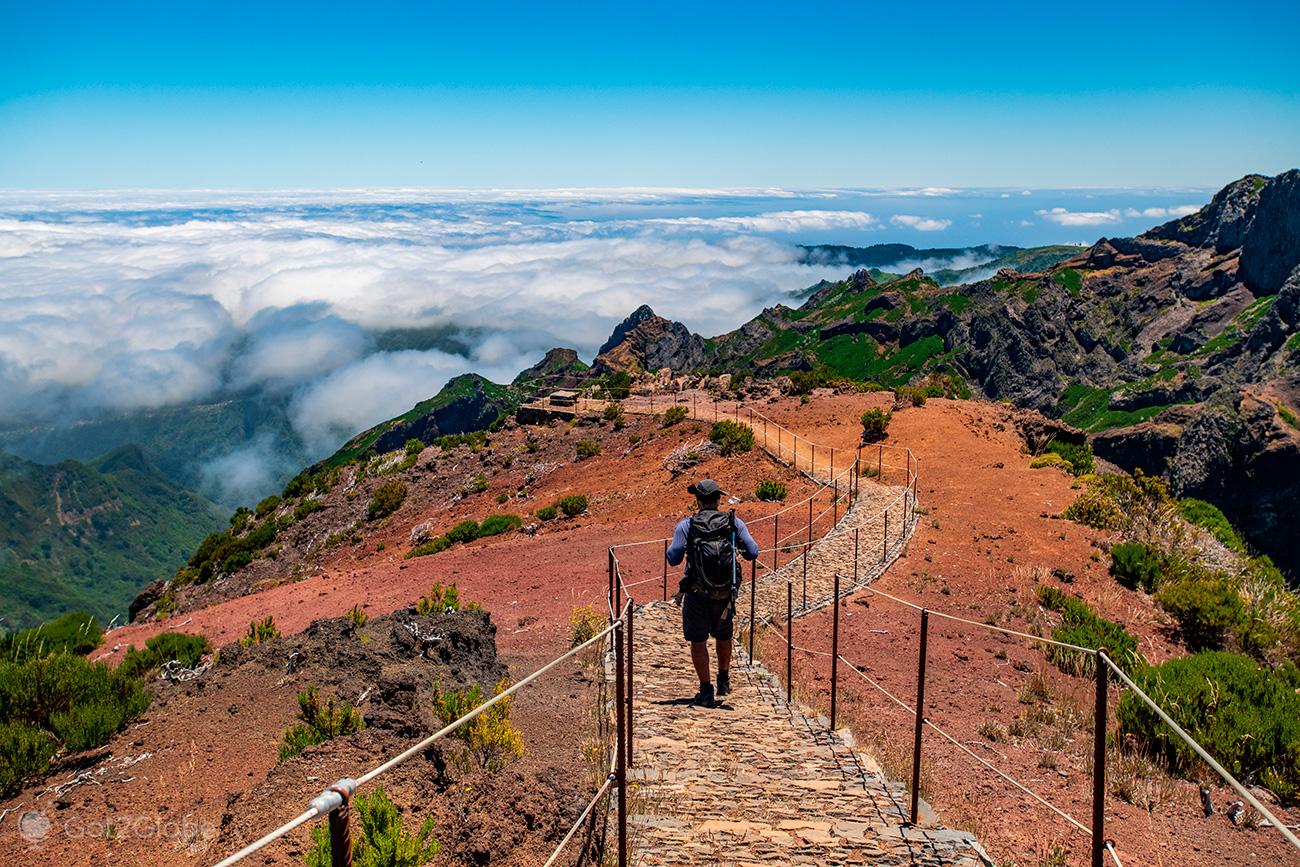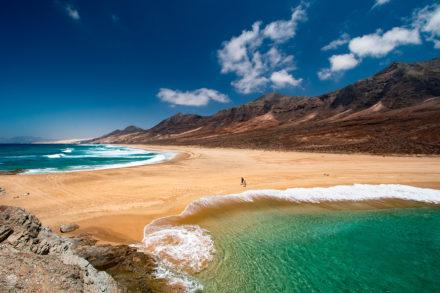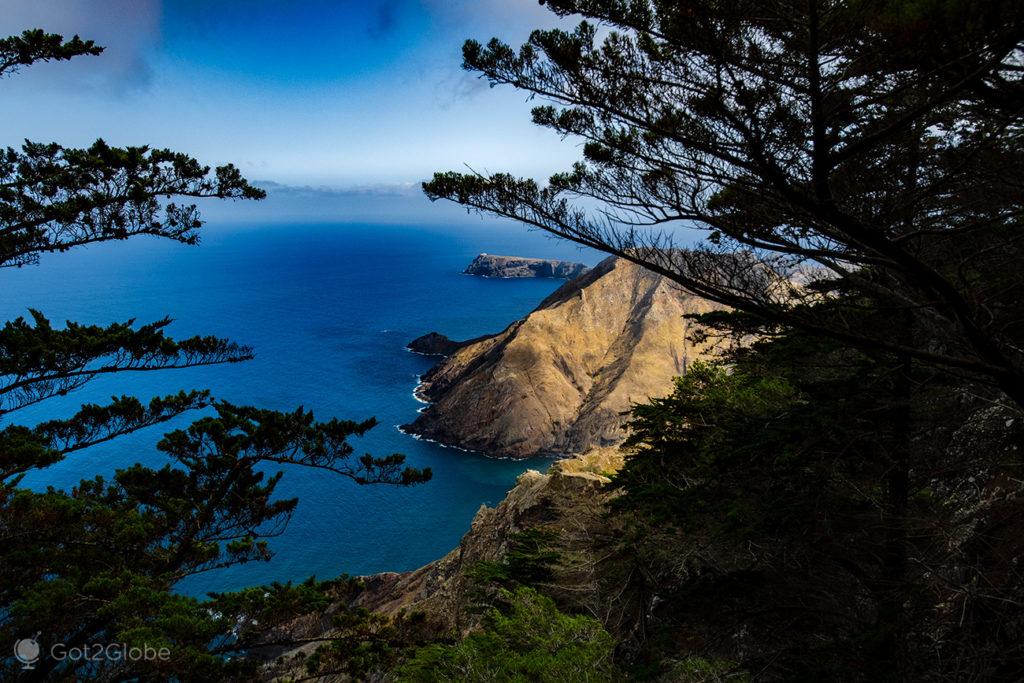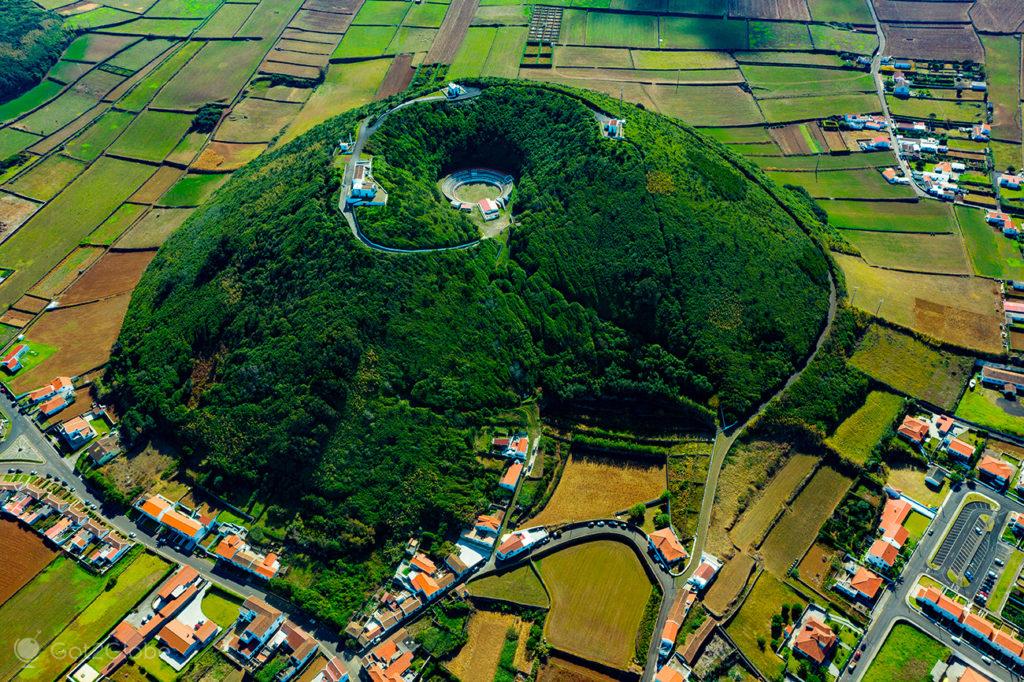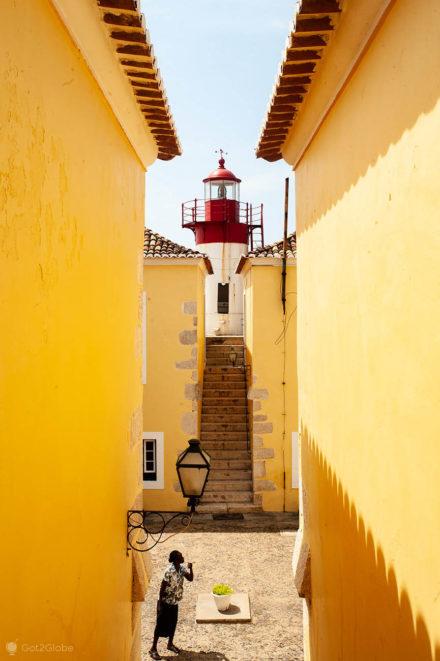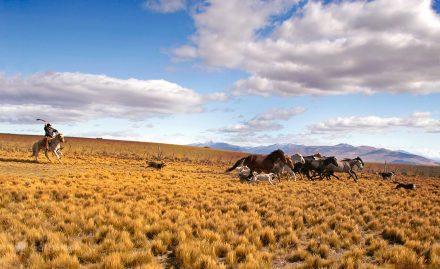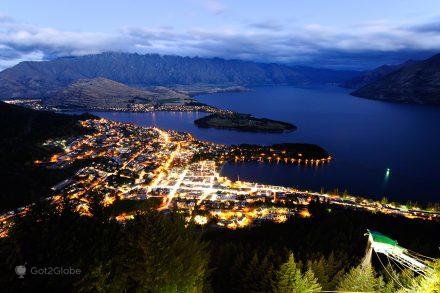It's six in the morning. Hugo Rodrigues drives the jeep up a long succession of vertiginous slopes that connect the Funchal VR1 expressway.
First to Poiso, the hamlet and shelter nestled at 1400 meters, in the forest on the south side of the island, a village with a mandatory passage for those who want to reach Pico do Arieiro by road.
Above the forest, with the dawn creeping into the pitch, we wind through the highlands of the Massif Central. We surprised cows delighted with the damp pasture, some in a mysterious understanding with gravity.
Clarity increases visibly. Pico do Arieiro doesn't take long. We reached it just in time to park, to get around a corner of it and finally get an unobstructed view to the east. And what a sight! We must exclaim it with as much admiration as possible.
A Lush Celestial Dawn
To the east, a celestial carpet of clouds stretched out until it merged with the cloudless infinity that sat on the horizon.
As yearned by a scattered crowd of worshipers of the solar system's solemn events, the great star finally emerges from the sea of clouds.

Dawn admirers against the orange of another sunrise.
First, in a surreptitious peek, covered by a band of warm tones, a kind of atmospheric frieze. Then, in a shy greeting. Finally, his whole face rounded and glowing, asserting itself as if the day had no choice but to welcome it.
The sun rises. It continues to dye the cloudy cloak that hid it. When your glowing ball stands out in the blue, it browns the cloudiness completely. It arouses exultations and celebrations of life among earthlings aware of the incredible astronomical bounty associated with any and every dawn.
The desire to move forward, to climb above the clouds and to try to reach it, passes through our minds. Rushed in a quick and apparent intersection of the Earth, the star rises and moves away from the horizon towards its zenith.
We turn to the West. The dawn gilded the capricious outlines of the mountains that make up Madeira's roof.
Retreating dawn spectators walked in the direction of the large Air Force radar, this one, a white and lifeless sphere, useful since 2013 but in the shadow of stardom and solar protagonism since it was inaugurated.

Air force radar semi-sheltered behind the cliffs of Pico do Arieiro.
Sun Rise, Time to Leave Pico do Arieiro
We watched it for a moment, half-hidden as it was, behind a small mountain range with a jagged top. Until the warm tones of the Massif Central to the north of Madeira demand our attention and the crossing of its domains.
In the company of Gonçalo Vieira, a Funchal guide, we made our way to the stairway trail that descended on a thin edge of the slope, so narrow that it had the reinforced safety of side fences, providential in stormy days or just windy weather, in that without their support, hikers would be at the mercy of the weather.
We continued. For a short time. We are caught by the glimpse of houses scattered in the distant valleys of the mountain range, everything seemed to indicate inaccessible. Aware of the improbable reality of a village called Curral das Freiras and its proliferation in the remote depths of Madeira, we asked Gonçalo if it might not be, by chance, some of his houses.
Gonçalo confirms this, with a caveat: “…but they are not part of the central nucleus. They must be in the northern extension of the village.” Enlightened, we followed his firm steps, aware of those roller-coaster steps that required unexpected concentration.
A Rewarding Detour to the Ninho da Manta Viewpoint
We deviate from the main road, in order to pass by the unavoidable veranda of the Ninho da Manta, named in honor of a round-winged eagle (manta) that once nested there.
There, a viewpoint imposed on the relief revealed scenery more exuberant than ever. To the west, the higher and nearer slopes showed the ocher tone of its rock, too polished or arid to grant flowering.

Walker admires the scenery ahead from the balcony of the Ninho da Manta viewpoint.
In the direction of Pico das Torres (1853 m), the second highest on the island of Madeira, the serrated tops of the cliffs admitted a shallow green that clung to the less rigid and polished sections, in a grip resistant to the furious gusts of wind.
From the balcony down, against the still rising sun, an immensity of verdant peaks unfolded, subsumed under the advancing front of the sea of clouds.
On clear days, you can easily see the island and even the neighboring islets of the Porto Santo. If this was not the case, we were delighted to be dazzled by the Fajã da Nogueira Valley, with its riverbed of Ribeira da Metade as a line leading to the foothills of successive lush cliffs.
They are so steep and difficult to access that the little jester, a sea bird, treated in Madeira as a seabird, makes a nest there, and it is estimated that another, even rarer and more protected, the Madeiran nun.
At the base of the balcony of the viewpoint, a colony of massarocos shows us its arrangement aimed at the skies of purple spikes, endemic and resplendent, as if to justify its nickname of pride-of-Madeira and wanting to rival the geological portent in around.
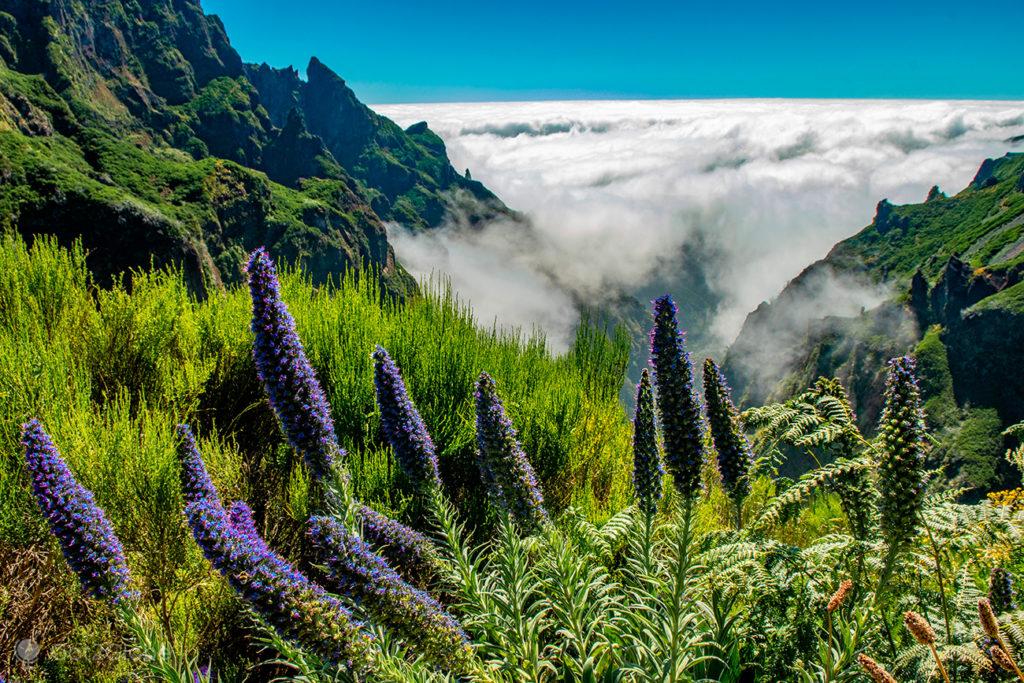
Massarocos or Madeira prides stand out from the rest of the vegetation on the heights of Madeira.
The Exuberant Geological Sections of Madeira Island
If everything – or almost everything – in the 740 km2 Madeira Island takes on a drama that is intimidating, let alone the zenith we were dedicated to traversing.
It is estimated that Madeira was formed from more than five million to seven hundred thousand years ago, in a long tectonic and volcanic process in which it ended up crowning a massive submerged shield volcano that rises 6km from the ocean floor Atlantic.
An intense erosion followed, responsible for the island's orography, almost always intricate and dazzling like the one that surrounded us. We return to the route.

Mountain ridges between Pico do Arieiro and Pico Ruivo.
From Ninho da Manta, we return to the main trail. We ascended to an exposed ridge that allowed us to admire the viewpoint again, with the clouds in the background but in unexpected comfort.
There, the furious trades characteristic of summer, tried as hard as they could to sweep us out of that fief of theirs.
Abrupt Descent to the Core of the Massif Central of Madeira
We resist. Then, we went down a new staircase to a deeper sector of the Massif Central, which revealed a new valley facing west, unlike the previous one in which we glimpsed the houses of Curral das Freiras, with no sign of human presence.
On the way down, we came across a family of partridges not as elusive as one would expect or – maybe that was before – trapped between us and the precipice behind the trail. We continued to descend.

One of the many tunnels that perforate the mountain between Pico do Arieiro and Pico Ruivo.
We cross the first tunnels that make the route possible: a wide one, framing the trail itself, a section of the valley that is covered and a bold front of clouds, much deeper into the mountain than the ones we had seen from Ninho da Manta. Then, the Pico do Gato tunnel, tight and gloomy to match.
The light in its background reveals to us a distinct stretch of everything hitherto, a curved cut on a slope below sharp peaks, on a slope lined with heather green, the bright yellow of daisies or the like.
And of wild hay gilt, with certain isolated husks of massarocos lending blue and purple to that incredible floral composition.

Hikers climb a trail surrounded by an assortment of Madeiran vegetation.
Around the imposing Pico das Torres
From shade and color, through a new tunnel, Gonçalo leads us back to the shade, against the resplendent view of the contours of Pico das Torres, the second elevation of Madeira, measuring 1853 m.
We chased it along a kind of human levada, excavated at the base of large reddish cliffs, in certain points concave, at first, overlooking a fort of rocky barbs, sharpened and detached from another half-slope in the form of a natural geological installation .

Hiker walks along a stretch excavated in the rock of the trail between Pico do Arieiro and Pico Ruivo
At a point where the passage appears endowed with an escape route, Gonçalo makes a stop to recover energy. While we devour an improvised snack, he confirms his desire and plan to travel to Nepal and from there travel the long Annapurnas Circuit.
It was a challenge we met in March 2018. Okay, we bombarded you with so many tips, adventures and trivia that the guide can barely process them.
After the meal was over, we resumed walking and realized at a glance the convenience of having replenished our energy there.
With Pico das Torres ahead, the trail continues along a long staircase with spaced steps that forced us to make a double effort.

Hiker about to leave one of the several tunnels that enable the trail between Pico do Arieiro and Pico Ruivo.
We beat him with his legs on fire. At the top, we regain the distant view of the sea of clouds.
We snake through a ghostly forest of trees that seem to have perished to beg for the marine moisture from the north.

Withered tree stretches towards the dampness that hangs against the north coast.
Final Attack on Pico Ruivo, Island Ceiling
Between ferns and heather in Madeira, in a sea of green that rivaled that of the clouds, the trail climbs gradually. Until it is at the doors of the shelter of Pico Ruivo.
We take advantage of the shade of the local barbecue area to rest and regain energy.
By then, our muscles were punished and prepared for the massacres that would follow. In good time. Since the departure of 1818 meters, above and below, we had already walked the 1542 meters from the lowest point of the course.

Signs indicate the opposite directions of Pico do Arieiro and Pico Ruivo.
This was followed by the final ascent to 1861 meters from the roof of Madeira, almost 500 meters below the Pico on the Azorean island of Pico, smoother than we were counting.
At the top, 360º around the geodesic landmark that marks the fulcrum of the roof of Madeira, we contemplate the island in all its diversity and splendor: the northern cloud front, more tangible than ever.
Outsize View of Outsize Madeira
The Torres and Arieiro Peaks, so close that it was hard to believe that we had been walking through them for five hours, two more than normal, something justified considering the countless stops, setbacks and photographic essays with which we were illustrating the route .
Instead of a conventional peak, steep and sharp, the top of Pico Ruivo was flattened in a panoramic tens of meters. Around the geodesic frame, along its crest, an opportune sidewalk breaks the ocher tone, red like the baptism of the hill, predominant at the top.

Trail runs along the reddish roof of Pico Ruivo, the roof of the island of Madeira.
A few other hikers arrived at the safe and fenced threshold of the top, surrendered themselves to the glorious poses of “John and the Beanstalk”, there yes, visibly sustained by the sea of clouds.
We and Gonçalo performed our own poses, refreshed by the marine breeze with which the Atlantic to the north it held us.
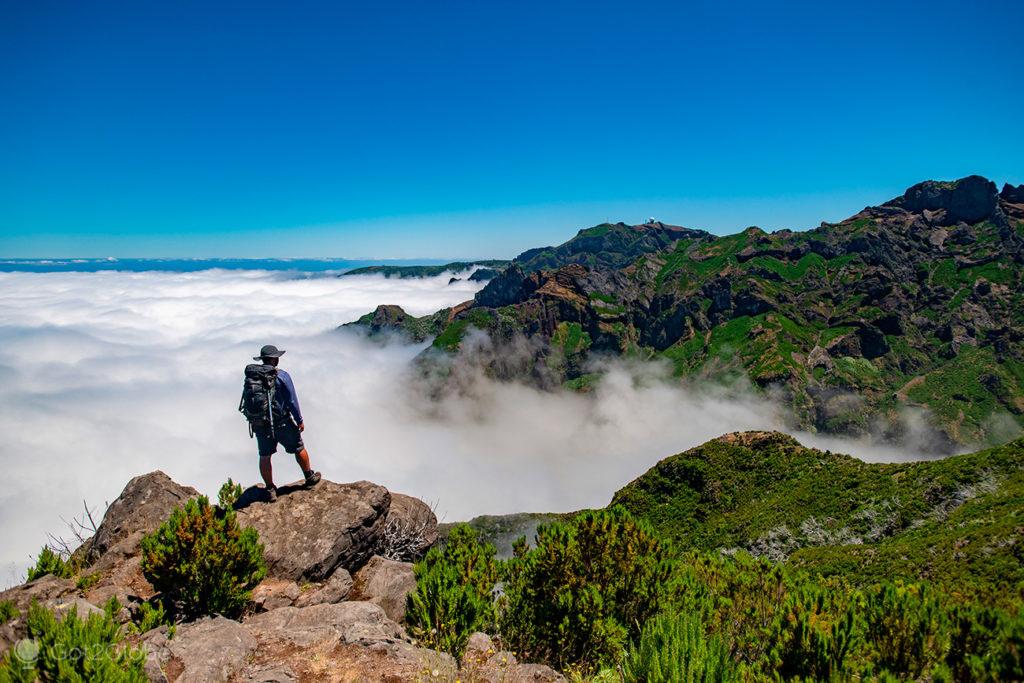
Hiker above the sea of clouds that bathes the north of Madeira.
Half an hour later, we descend towards Achada da Teixeira where we end our journey. We had spent half the day at the peak.
Fifteen days of pure Madeiran wonder followed.













